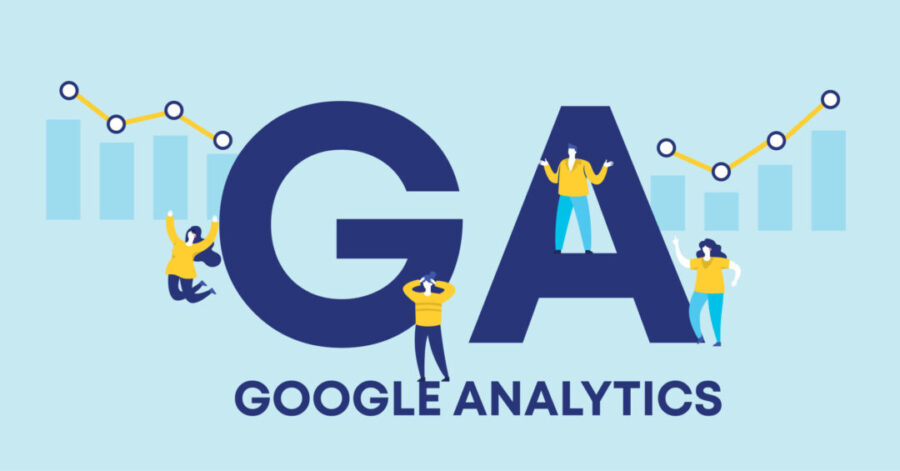With a quickly approaching transition date on July 1, 2023, Google will be sunsetting Universal Analytics (UA) in place of its new property, Google Analytics 4 (GA4). While there are likely many questions about what this change brings, the transition will introduce a wealth of opportunities to gain a deeper understanding of how customers interact with your business. We’re excited to partner together to unlock these new capabilities!
With a privacy-centric approach and advanced reporting features, GA4 equips marketers with the tools we’ll need to tap into the true potential of your data. While these changes will look different than what we’re accustomed to in UA, GA4 will allow us to unlock valuable, customizable data which will grant a holistic view of the entire lifecycle from acquisition to conversion.
Key Features of GA4
Event-Driven Data Model
GA4 will rely on event-based data, which offers more flexibility and customization compared to the traditional pageview-centric approach of UA. Events can be defined by specific user interactions (a page view, scrolling, and session start) allowing us to track and measure key actions that align with your goals.
Cross-Platform Tracking
GA4 enables businesses to track user interactions across multiple platforms, including websites, mobile apps, and even offline events. This unified tracking approach provides a holistic view of the customer journey and allows for better attribution and analysis of user behavior.
Machine Learning
GA4 incorporates machine learning capabilities to surface valuable insights from your data automatically. It can identify trends, predict future outcomes (predictive insights are also a new feature of GA4), and provide recommendations to optimize our program.
Privacy-Centered Approach
GA4 is designed with “future-proofing” in mind due to the changing privacy landscape among us. While we’re able to collect and analyze meaningful user data, GA4 adheres to all privacy regulations and user consent preferences.
Then (UA) vs. Now (GA4)
Data Model
UA: Uses a session-based model, where data is organized into hits, sessions, and users.
GA4: Uses an event-based model, where data is organized around events and parameters. Events can be customized to track specific user actions, and parameters provide additional context to the events.
(For example, Engaged Sessions will qualify when a user has actively interacted with your site for at least 10 seconds.)
Tracking Model
UA: Primarily relies on third-party cookies and uses JavaScript tracking code to collect data from websites.
GA4: Focused on first-party cookies and uses a combination of JavaScript and measurement to collect data from websites, apps, and other digital platforms.
Data Collection
UA: Primarily focuses on website tracking and provides customizable options for tracking various dimensions and metrics.
GA4: Aims to provide a more holistic view of user interactions across multiple platforms, including websites, apps, and other digital devices. It offers enhanced cross-platform tracking and allows you to track user behavior across different channels.
Reporting & Analysis
UA: Traditional reporting features, such as custom reports, and advanced segmentation. The reporting interface is based on dimensions and metrics.
GA4: Introduces a new reporting interface with updated data exploration capabilities. It emphasizes analysis using machine learning techniques, such as automated insights, predictive metrics, and advanced modeling. It now has a new customizable interface featuring Report Cards. A real-time report will now be integrated with standard reports vs. a broken out report, and are very customizable.
SEO
UA: Previously, organic engagement was measured by bounce rates and session durations, taking into consideration the amount of time a user spent on a site or page upon finding it from a search engine.
GA4: Now, organic engagement relies heavily on what is referred to as “events”, a more modern way of referring to actions taken by a user. These events might include anything from form submissions to internal link clicks, video plays, and even page scroll length.
In conclusion, Google Analytics 4 represents a significant leap forward in the world of data analytics. Its event-driven data model, cross-platform tracking, and machine-learning capabilities will help us gain deeper insights into user behavior and optimize our marketing efforts. We’re excited about the transition to GA4 as it offers a more future-proof and comprehensive analytics solution. As always, at Group Two we’re here to forge the new frontier of the digital landscape together and unlock new avenues for growth!
Term Glossary
Engaged Sessions: number of sessions that have lasted longer than 10 seconds OR have conversion events OR have >2 screen views.
Engagement Rate: measures the level of engagement on your website or app. It calculates the number of engaged sessions divided by the total number of sessions and is expressed as a percentage. Engaged sessions are when users interacted with your content, such as clicking on links, watching videos, or spending a significant amount of time on a page.
Event Count: measures the total number of events triggered by users on your website or app. Events can include actions like clicks, downloads, form submissions, video plays, and more. This metric helps you understand user interactions and track specific actions or behaviors.
Engagement Time: measures the total time users spend actively engaging with your website or app. It includes the time spent interacting with pages, events, and other elements. This metric provides insights into user engagement levels and can help identify areas where users are spending more or less time.
Scroll Depth: measures how far users scroll down a webpage. It provides information about how much content users are consuming and helps identify if there are any significant drop-off points on a page.

